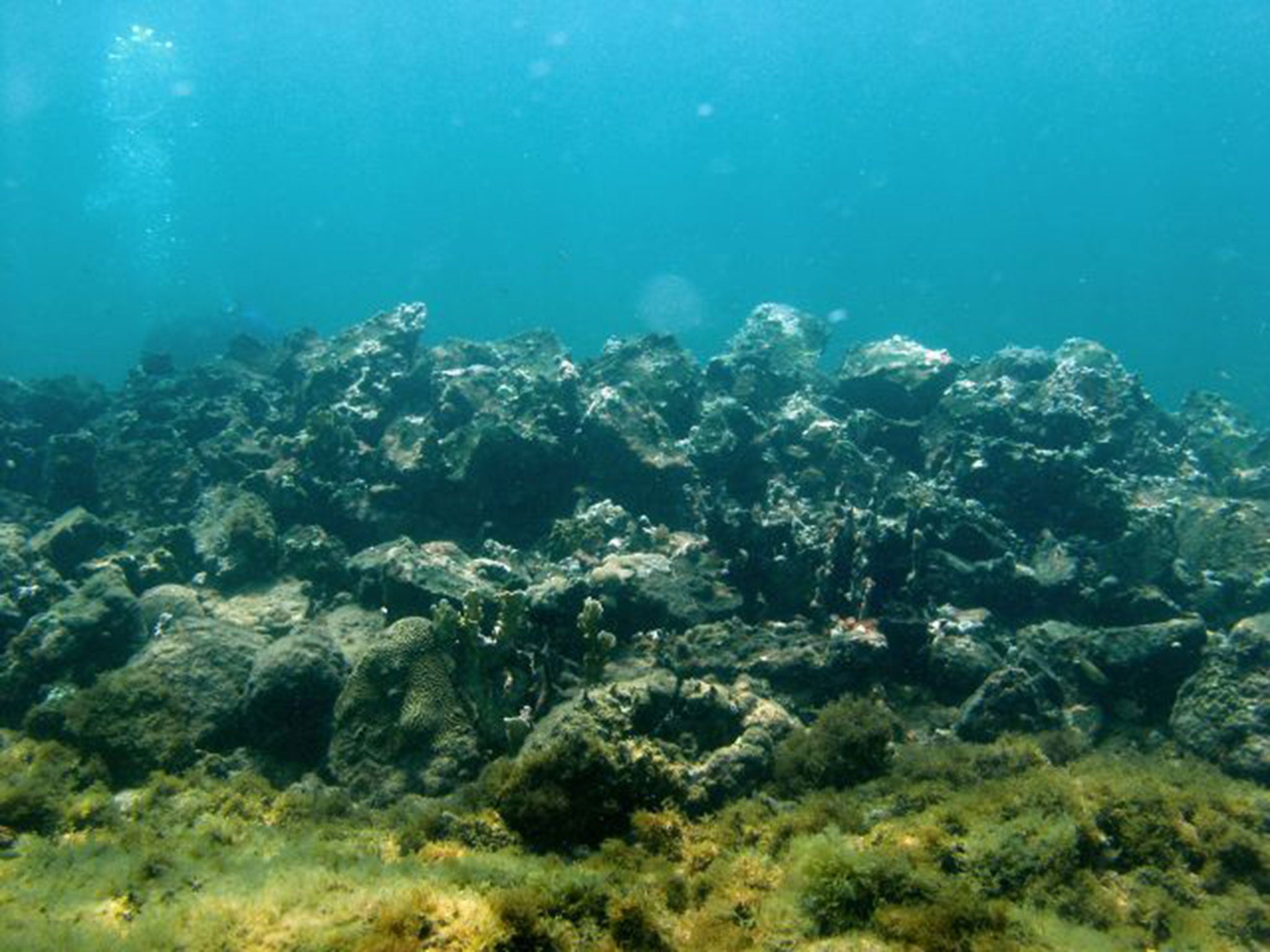Christopher Columbus Santa Maria discovery: Archaeologists hail find as 'amazingly significant'
The Independent revealed that remains found off the north coast of Haiti are believed by archaeologists to belong to the famous vessel

Maritime archaeologists tonight hailed the potential discovery of the wreck of Christopher Columbus’s flagship, the Santa Maria, as “amazingly significant”.
Yesterday The Independent revealed that remains found off the north coast of Haiti are believed by archaeologists to belong to the famous vessel, which was lost in the Caribbean more than five centuries ago.
Barry Clifford, one of America’s top underwater archaeological investigators, said he was “confident” that the remains are those of the ship captained by the great explorer on his first voyage to the Americas in 1492.
Mr Clifford narrowed the search down to a tiny area using marine magnetometers, side-scan sonar equipment and divers – and entries in Columbus’s personal diary. He is now awaiting permission to carry out a full excavation of the site.
Professor Jon Adams, director of the Centre for Maritime Archaeology at the University of Southampton, said: “If it’s the Santa Maria, it would be a major find. You could say it’s additionally significant because it has both archaeological importance in terms of its materiality but it also has social importance because of its historical significance.”
His colleague Dr Fraser Sturt added: “If it is [the Santa Maria] it’s amazingly significant because of the story that goes with it. I’d be sceptical until you get really good, concrete evidence – but the discovery of any ship from that period would be intensely interesting in its own right.”
READ MORE:
British marine archaeologist Dr Sean Kingsley said the discovery “could shed a major educational spotlight on the ‘birth’ of the Americas”. But he added that the archaeologists involved would have to answer several “hard questions” before the find could be verified, and that even if it was, a political battle is likely to erupt over ownership.
“Spain no doubt will claim its remains as a sovereign vessel,” he said. “Haiti signed the UNESCO Convention on the Protection of the Underwater Cultural Heritage in 2009. No doubt many heritage experts would prefer to see the wreck left underwater and turned into a dive trail as UNESCO prefers.”
Last week, the same company said it had recovered almost 1,000 ounces of gold worth $1.3 million (£771,000) during an initial exploration of the wreck of the SS Central America, a steamship which sank off the coast of South Carolina in 1857.
Sunken treasure: Which wreck could be the next one found?
1. San Miguel
Believed to be carrying vast amounts of silver plate, gold, pearls and emeralds, the San Miguel was among 12 ships to set off from Havana in 1715 bound for Spain, which at the time was badly in need of funds. But the fleet was caught in a hurricane a week after leaving Cuba, with thousands of the crew perishing. Other ships that went down have since been found, but the San Miguel remains elusive. Some believe that it rests in the shark-infested Nassau Sound.
2. San Jose
A Spanish galleon which sank off the coast of Colombia in 1708, the San Jose is believed to have been carrying a fortune in treasure – including 116 chests of emeralds and the personal wealth of the Viceroy of Peru. Many believe it to be the most valuable ship ever sunk. A US company called Sea Search Armada claims to have located the wreck, but has been locked in a decades-long legal dispute with the Colombian government over who can claim any resulting booty – so it still lies undisturbed.
3. Las Cinque Chagas
The Portuguese merchant ship was returning from the East Indies in 1594 with a haul of diamonds, rubies and pearls when it was sunk in the Azores by the English. Although the vessel was huge – 150ft long and weighing 1,200 tonnes – it is believed to lie in 2,500ft of water, so far scuppering attempts to locate it. And spare a thought for the 1,000 people on board, of whom around 400 were slaves.
4. Grosvenor
On its way back from India in 1782, this British ship was wrecked off the coast of South Africa. One of the East India Company’s finest vessels, it is believed to have been carrying 1,400 gold ingots, 19 chests of gems and 2.6 million gold coins – not to mention a jewel-encrusted throne in the shape of a gold peacock.
5. Flor de la Mar
A 400-tonne Portuguese frigate built in Lisbon in 1502, the “Flower of the Sea” was returning from the Far East in 1511 captained by Alfonso de Albuquerque when it was caught in a violent storm in the Straits of Malacca and broke in two. The ship was loaded with gold bullion, silver plate and tributes from the King of Siam, so there are plenty of reasons to look for it – but so far nobody has succeeded in finding it.
Chris Green
Join our commenting forum
Join thought-provoking conversations, follow other Independent readers and see their replies
Comments